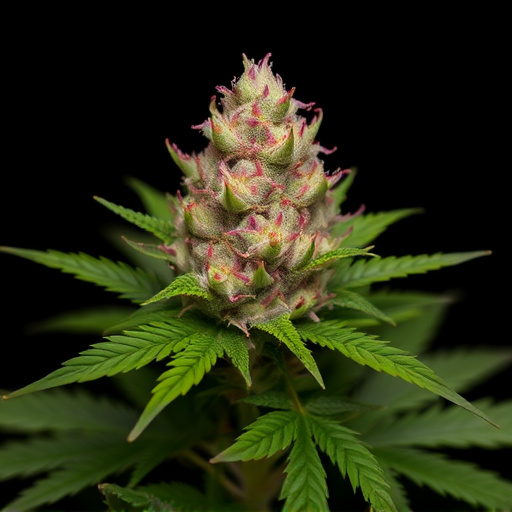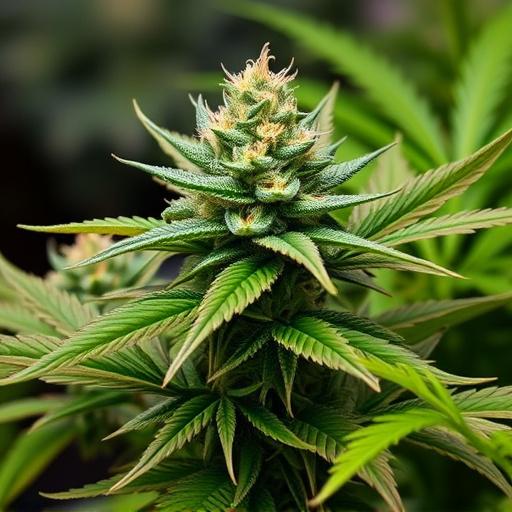Terpenes, often overlooked alongside cannabinoids like THC and CBD, are vital aromatic compounds in new cannabis strains that define unique sensory profiles. They not only contribute distinct flavors and scents but also interact with cannabinoids to influence potency and effects. Breeders use terpene profiles to create tailored experiences, from relaxing sedatives with myrcene to uplifting citruses through limonene. Understanding terpene-cannabinoid interactions is key to maximizing cannabis' medicinal benefits for personalized treatment in the diverse landscape of new cannabis strains.
Terpenes, the aromatic compounds found in cannabis, play a pivotal role in shaping its unique effects. This article delves into the intricate world of terpenes, exploring their chemical properties and profound impact on the cannabis experience. From understanding the fundamentals to deciphering their influence on both medicinal benefits and psychosocial impacts, we uncover how these compounds contribute to the diverse profiles of new cannabis strains.
- Understanding Terpenes: The Chemical Compounds Shaping Cannabis Experience
- The Role of Terpenes in New Cannabis Strains
- Deciphering the Effects: How Terpenes Influence Cannabis' Medicinal Benefits and Psychosocial Impact
Understanding Terpenes: The Chemical Compounds Shaping Cannabis Experience

Terpenes, often overshadowed by cannabinoids like THC and CBD, are a group of aromatic compounds that play a pivotal role in shaping the unique experiences offered by cannabis. These chemical substances are responsible for the distinct flavors and scents associated with different strains, contributing to the overall sensory experience. With the ever-evolving landscape of cannabis, understanding terpenes is crucial, especially as new cannabis strains emerge, each boasting its own specific terpene profile.
The impact of terpenes goes beyond mere scent and taste. They can influence the potency and effects of cannabis, interacting with cannabinoids in a complex dance that results in varied therapeutic benefits. For instance, myrcene, a common terpene, is known for its sedative properties, often enhancing the relaxing effects of cannabis. As enthusiasts explore new strains, recognizing these terpene-cannabinoid interactions can lead to more personalized and anticipated experiences.
The Role of Terpenes in New Cannabis Strains

In the realm of cannabis, the development of new strains has become a vibrant and bustling landscape. Terpenes, aromatic compounds responsible for the distinct flavors and aromas we associate with various plants, play a crucial role in shaping the unique effects of these new cannabis varieties. As breeders continue to explore the vast potential of this plant, they meticulously select and combine different terpene profiles to create strains that offer tailored experiences.
The introduction of novel terpene combinations in new cannabis strains allows for a diverse range of effects. For instance, myrcene, a common terpene known for its earthy scent, is often linked to relaxing and sedative properties, making it popular among those seeking relief from stress or insomnia. Meanwhile, limonene, with its citrusy aroma, can evoke feelings of happiness and energy, providing a more uplifting experience. This nuanced approach to terpene selection ensures that consumers have access to a spectrum of cannabis experiences, catering to different preferences and desired effects in the ever-evolving world of new cannabis strains.
Deciphering the Effects: How Terpenes Influence Cannabis' Medicinal Benefits and Psychosocial Impact

Deciphering the Effects: How Terpenes Influence Cannabis’ Medicinal Benefits and Psychosocial Impact
Terpenes, the aromatic compounds found in cannabis, play a pivotal role in shaping its therapeutic effects. Beyond their contribution to the distinct flavors and aromas of new cannabis strains, terpenes have been shown to interact with cannabinoids, enhancing or modifying their activity within the body. For instance, myrcene, known for its earthy scent, has relaxing properties that can complement the psychoactive effects of THC, making it beneficial for treating anxiety and insomnia. Similarly, limonene, with its citrusy notes, is linked to mood elevation and cognitive enhancement.
Understanding these terpene-cannabinoid interactions is crucial for maximizing cannabis’ medicinal benefits. As researchers continue to unravel the complexities of these chemical relationships, particularly in the context of new cannabis strains, it becomes evident that terpenes significantly impact not just the biological effects but also the psychosocial experience of cannabis consumption. This interaction contributes to the multifaceted nature of cannabis as a therapeutic tool, offering personalized experiences tailored to individual needs and preferences.
Terpenes, as versatile chemical compounds, play a pivotal role in shaping the unique experiences associated with cannabis. By influencing both medicinal benefits and psychosocial effects, they contribute significantly to the diverse profiles of new cannabis strains. Understanding terpene-cannabinoid interactions allows for tailored applications, enhancing therapeutic potential and personalizing user experiences. As research progresses, recognizing the complex interplay between terpenes and cannabinoids in new cannabis strains will unlock further insights into this ancient plant’s modern medical and cultural significance.














